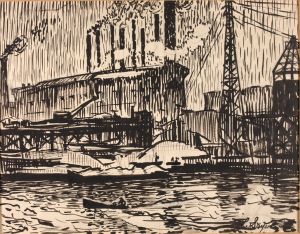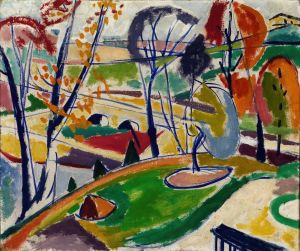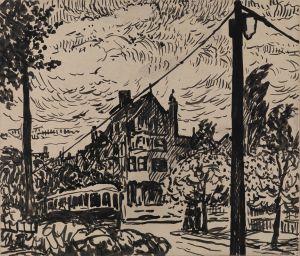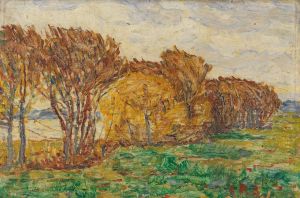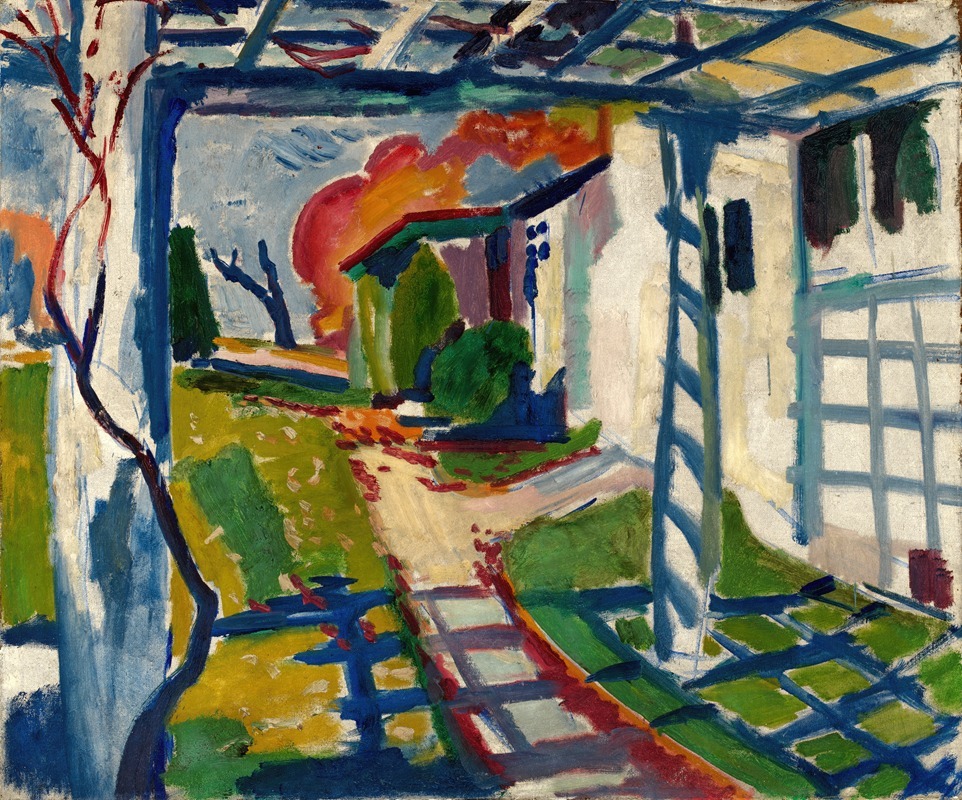
Grape Arbor
A hand-painted replica of Henry Lyman Saÿen’s masterpiece Grape Arbor, meticulously crafted by professional artists to capture the true essence of the original. Each piece is created with museum-quality canvas and rare mineral pigments, carefully painted by experienced artists with delicate brushstrokes and rich, layered colors to perfectly recreate the texture of the original artwork. Unlike machine-printed reproductions, this hand-painted version brings the painting to life, infused with the artist’s emotions and skill in every stroke. Whether for personal collection or home decoration, it instantly elevates the artistic atmosphere of any space.
Henry Lyman Saÿen (1875–1918) was an American artist and inventor, known for his contributions to both the scientific and artistic fields. One of his notable works is the painting Grape Arbor, which exemplifies his unique approach to color and form. Saÿen was influenced by the Post-Impressionist and Fauvist movements, which is evident in his use of bold, vibrant colors and expressive brushwork.
Grape Arbor reflects Saÿen's interest in capturing the interplay of light, nature, and structure. The painting depicts a grape arbor, a common garden feature, rendered with dynamic colors and a sense of movement. Saÿen's use of non-naturalistic hues and rhythmic patterns demonstrates his departure from traditional realism, aligning his work with the modernist tendencies of the early 20th century. The painting is celebrated for its lively composition and the way it transforms a simple subject into a vivid, almost abstract scene.
Saÿen's artistic career was relatively short, as he passed away at the age of 43 during the influenza pandemic of 1918. Despite his limited output, his works, including Grape Arbor, have been recognized for their innovative qualities and their contribution to the development of modern art in the United States. Saÿen was also an accomplished inventor, having worked with Thomas Edison and contributed to the development of the X-ray tube, which further demonstrates his multifaceted talents.
Today, Grape Arbor is part of the collection of the Smithsonian American Art Museum in Washington, D.C. The painting is appreciated for its historical significance and its role in showcasing the experimental spirit of early 20th-century American art.








